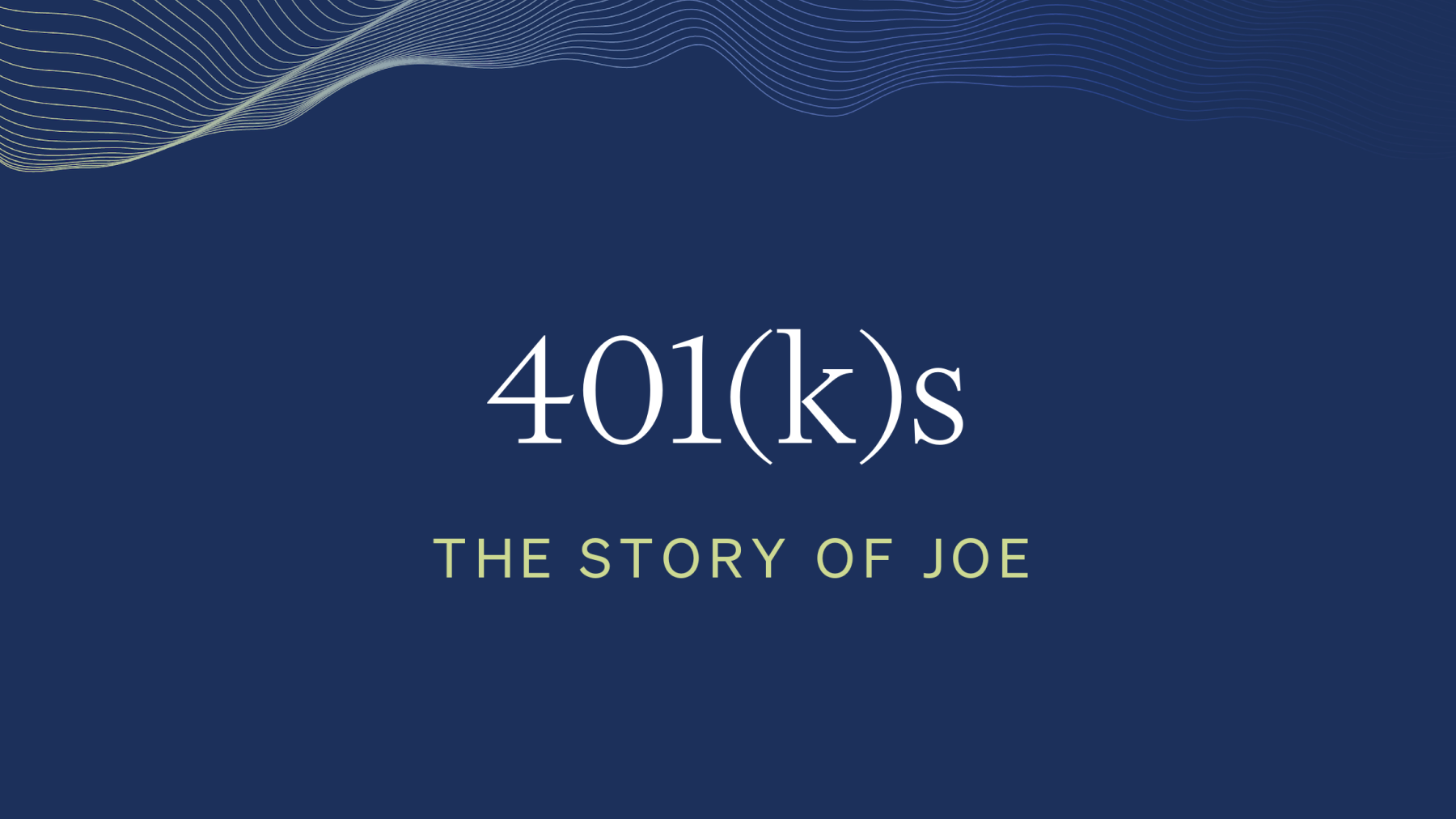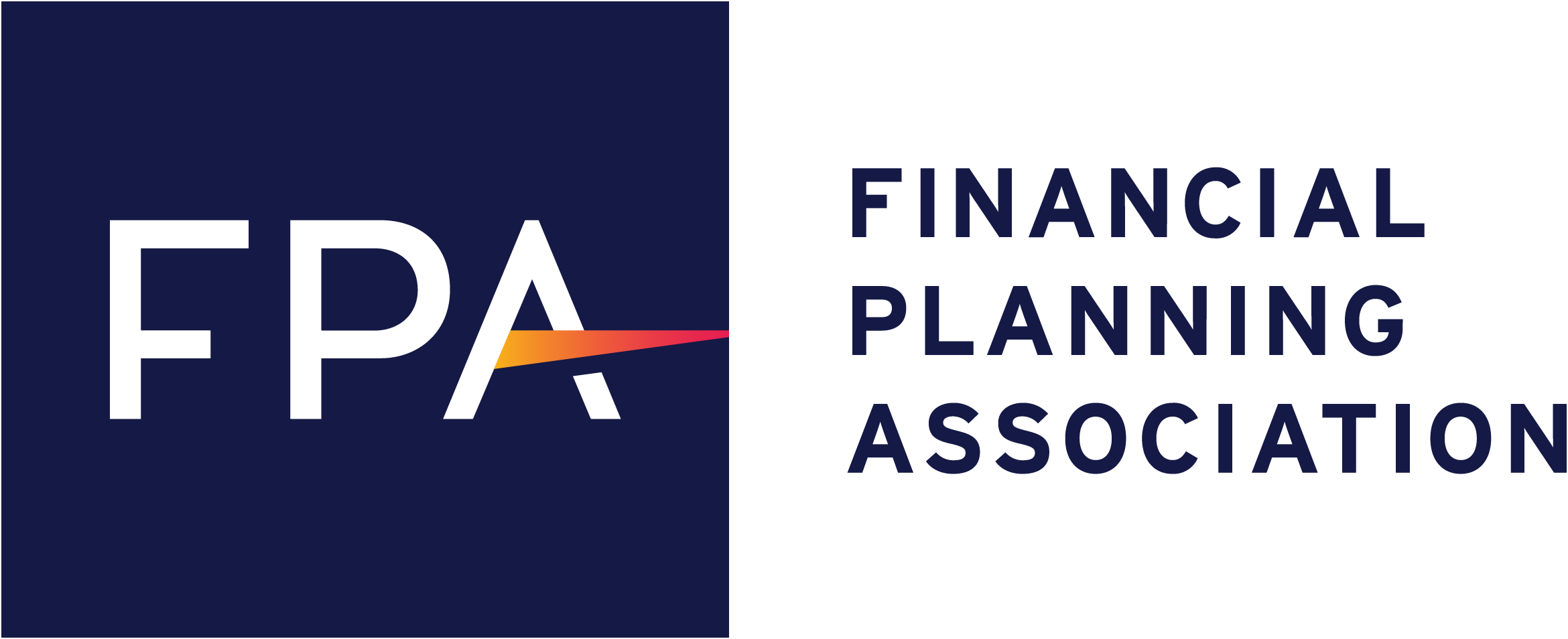401(k)s: The Story of Joe
- Financial Planning
- Retirement Planning

Let me introduce you to my friend, Joe (not his real name—in fact, he’s not a real person!). Joe is an engineer in his early 40s, and he is in the process of changing jobs—maybe. He has an offer from another firm that involves a slightly higher salary along with enrollment in the firm’s 401(k) plan. His current firm, getting wind of Joe’s possible departure, dangles a sizeable bump in pay—15% more than Joe would be earning with the other firm. Joe’s current firm, however, does not have a 401(k) plan. How do these options compare?
Based purely on these different compensation options, we would likely counsel Joe to move to the engineering firm with the 401(k) plan, even though he could make a higher salary by taking his current firm’s offer. Why? Because at Joe’s age, it is critical for his long-term financial health to get serious about funding his retirement, and there is no better method for doing that than participating in an employer-sponsored retirement plan—like a 401(k). Given the number of years until Joe plans to retire, he could potentially rack up significant tax-favored growth in such a plan—perhaps far outweighing the extra earnings he might make by staying with his current company.
But Joe has questions. While he has heard of a 401(k), he doesn’t fully understand the benefits. Let’s look at what Joe is asking and see if we can clarify why we think he should take the offer with the 401(k) attached.
What is a 401(k) and how does it work?
A 401k is an employer-sponsored retirement plan that allows employees of a for-profit company to contribute up to $22,500 in 2023 to an account that can grow on a tax-deferred basis (the non-profit equivalent is called a 403(b) plan). The employee chooses a percentage of their income to contribute to the plan, and the employer automatically deducts the proper amount from each paycheck. For example, let’s say you earn $100,000/year and choose to contribute 10% of your income into your 401(k). Over the course of the year, you would have contributed $10,000 total to your account. Some employers offer a partial match of employee contributions, which can help your account grow even faster. Once the funds are deposited in the account, they may be invested in what is offered through the employer’s plan.
What types of 401(k) plans are there?
There are two types of 401(k) plans: traditional plans and Roth plans. The main difference between the two is when the money placed in the plan is taxed.
Traditional 401(k) plans allow contributions to the plan on a pre-tax basis, meaning that the deposits in the plan provide a reduction in the employee’s taxable income for the year. Going back to our previous example, suppose you contributed 10% of your $100,000 annual salary into a traditional 401(k) for 2023. Your taxable income for the year would be reduced to $90,000. As long as the funds remain in the 401(k), they will grow tax deferred until you begin withdrawing the money in retirement or reach the age at which you are subject to “required minimum distributions,” or RMDs which starts at age 72 or later (more on this below). At that time, withdrawals are taxed as ordinary income based on your tax bracket. Funds withdrawn from a 401(k) account prior to age 59 ½ are typically subject to a 10% tax penalty, in addition to being taxed as ordinary income for the year.
The other type of 401(k) is called a Roth 401(k), which allows employees to make after-tax contributions. In other words, Roth contributions do not reduce your taxable income when you deposit the money, but when you begin withdrawing funds in retirement, the withdrawals are not taxed. Looking at our example again, your Roth 401(k) contribution would still equate to $10,000 for the year, but your 2023 taxable income would remain at $100,000. However, since you are not receiving a tax benefit on these contributions in the year they are being made, your withdrawals in retirement are tax-free. Also, under the recently passed SECURE Act 2.0, Roth 401(k)s are not subject to RMDs.
How much can I put in a 401(k) for 2023?
How does an employer match affect my account?
In 2023, the employee contribution limit is $22,500. Those age 50 and older can also make a catch-up contribution of up to $7,500, which means anyone 50 or older can contribute a maximum of $30,000 of their income to a 401(k) plan. In addition, employers may choose to make matching contributions up to a specified limit over and above the employee’s allowed contributions. For example, your employer may offer to match 100% of your contributions up to the first 3% of your salary. If you make $100,000 in 2023 and elect to contribute 10%, then your total contribution to your 401(k), including the 3% match from your employer, would be $13,000. Employees who have access to an employer-matched 401(k) plan should elect to contribute at least the same amount as the full employer match since this effectively doubles your contributions to the account. Failing to do so leaves free money on the table that could otherwise be invested in your 401(k) to potentially provide decades of tax-advantaged growth.
What is an RMD?
Can I calculate what my RMD will be?
As mentioned above, the funds deposited in a traditional 401(k) provide a reduction in taxable income when the contribution is made, and the account grows on a tax-deferred basis. Because of this tax benefit, funds in a 401(k)—or other tax-favored accounts like IRAs—may be able to grow faster than non-tax-favored accounts, since no taxes are being taken out from year to year, also known as a tax drag. “So” you might ask, “if I don’t need the money, can’t I just leave it in the account indefinitely? Unfortunately, with a traditional 401(k), this is not allowed. At a certain point, the IRS will require you to begin withdrawing funds from your traditional 401(k) account in the form of required minimum distributions (RMDs), at which point the amount withdrawn is taxed as ordinary income. RMDs begin once you turn a certain age. Under current law, RMDs are required at the following ages:
- 72 for those born prior to 1951;
- 73 for those born 1951–1959;
- 75 for those born in 1960 or later.
RMDs are calculated by taking the total of all your traditional 401(k) and traditional IRA account balances and dividing it by a life expectancy factor as determined annually by the IRS. This life expectancy factor gets smaller each year, which means that your required distribution may increase year after year—also increasing your taxable income, in most cases. Managing the tax impact of RMD’s can be very important to your financial plan.
Once you reach your RMD age, distributions must be taken by December 31 of each year. The money can be distributed in any frequency—a single lump sum, quarterly, or monthly—as long as you have taken the full required amount by the end of the year. It is worth noting that, in most cases, you do not have to take an RMD from your traditional 401(k) if you are still working, although you will still be required to take an RMD from your traditional IRA, if you have one.
Remember, Roth 401(k)s have no RMDs.
Which is better: a traditional 401(k) or a Roth 401(k)?
The answer depends on making an educated guess about your future tax bracket. Generally, you will want to choose a traditional 401(k) if you expect to be in a lower tax bracket during retirement since that is when you will begin taking your RMDs (which are taxed at your ordinary income rate at the time of the withdrawal). However, if you believe you will be in a higher tax bracket in retirement, you should choose a Roth 401(k). Though you will pay taxes on the money you contribute now, the income you draw from the account in retirement—if you choose to draw it—will not be taxed. If you expect your tax rate to stay more or less the same, then other factors may apply requiring detailed analysis to make a decision. In addition, our research shows that when investors defer the tax payment by contributing to a traditional 401(k), the money they save by having the current-year tax deduction typically is either spent or not invested tax-efficiently. For example, dividends and interest in these taxable investment accounts get taxed in the same year they are received. By contrast, money deposited in a Roth account grows tax free. In other words, the Roth may end up offering a potential advantage even to taxpayers who may be in a slightly lower bracket in retirement.
Which is better: a 401(k) or an IRA?
While an employer must sponsor and offer a 401(k) in certain states, anyone with earned income can contribute to an IRA (individual retirement account). Like 401k(s), an IRA can be set up either as a traditional IRA or a Roth IRA. There are income limitations for making contributions to a Roth IRA, as well as receiving a tax deduction on the contribution to a traditional IRA. IRAs and 401(k)s also share the same age at which penalty-free withdrawals can be made (59 ½), and RMDs must be taken at the same age for both types of traditional accounts as noted above. Because 401(k)s allow for greater annual maximum contributions than IRAs ($22,500 vs. $6,500) and often receive an employer match with the added convenience of automatic payroll deductions, it is generally best to focus first on maxing out your 401(k). On the other hand, you have more control in the way funds in an IRA are invested compared to most 401(k) plans, which offer a more limited set of investment options to choose from.
Are there any penalties with a 401(k)?
There are two types of penalties to watch out for:
- Early withdrawal penalty. Withdrawals from a 401(k) before you reach age 59 ½ are subject to an early withdrawal penalty of 10% in addition to being taxed at ordinary income tax rates. A few exceptions to the early withdrawal penalty include using the funds as a down payment on a home if you qualify as a first-time homebuyer ($10,000 maximum).
- Failure to take a proper RMD. Not withdrawing enough from your traditional 401(k) once you are retired and have reached RMD age also results in penalties. The IRS will impose a 25% excise tax on the amount not withdrawn by December 31 of each year, so it is important to satisfy this requirement. Note that if you are a “5% owner” of a business you will be subject to the RMD rules even if you are not retired.
If you have questions about a 401(k), another retirement plan (e.g. 403b, deferred compensation plan), or any other important financial matter related to your retirement, your Quantum Financial Advisor is here to help. Visit our website to learn more about the “Quantum Difference.”
DISCLOSURE: Quantum Financial Advisors, LLC is an SEC registered investment adviser. SEC registration does not constitute an endorsement of Quantum Financial Advisors, LLC by the SEC nor does it indicate that Quantum Financial Advisors, LLC has attained a particular level of skill or ability. This material prepared by Quantum Financial Advisors, LLC is for informational purposes only and is accurate as of the date it was prepared. It is not intended to serve as a substitute for personalized investment advice or as a recommendation or solicitation of any particular security, strategy or investment product. Advisory services are only offered to clients or prospective clients where Quantum Financial Advisors, LLC and its representatives are properly licensed or exempt from licensure. No advice may be rendered by Quantum Financial Advisors, LLC unless a client service agreement is in place. This material is not intended to serve as personalized tax, legal, and/or investment advice since the availability and effectiveness of any strategy is dependent upon your individual facts and circumstances. Quantum Financial Advisors, LLC is not an accounting or legal firm. Please consult with your tax and/or legal professional regarding your specific tax and/or legal situation when determining if any of the mentioned strategies are right for you.
Please Note: Quantum does not make any representations or warranties as to the accuracy, timeliness, suitability, and completeness, or relevance of any information prepared by an unaffiliated third party, whether linked to Quantum’s website or blog or incorporated herein, and takes no responsibility for any such content. All such information is provided solely for convenience purposes only and all users thereof should be guided accordingly.
For more information about Quantum and this article, please read these important disclosures.
- Financial Planning
- Retirement Planning
Matt Higgins, CFP®
Matt Higgins is a Financial Advisor with Quantum Financial Advisors, LLC.
Read More









